Scotland's Textiles
(Above image is a capture of a traditional loom weaver at work.)
Scotland has a long and continuing association with the textile industry.
From the 18th century through to the mid-20th century cotton and thread mills were common, many of them originally water powered.
Today, key centres of activity are focused on manufacture of cashmere products and Harris Tweed.
Harris Tweed
Dyeing wool on Harris
Production exclusively takes place on the islands of Lewis and Harris part of a chain of islands off Scotland's west coast known as the Outer Hebrides.This product is trademarked and protected under the auspices of the Harris Tweed Authority which was established by the U.K. Parliament in 1993. The Act specifies that Harris Tweed must be:
“Handwoven
by the islanders at their homes in the Outer Hebrides, finished in the
Outer Hebrides, and made from pure virgin wool dyed and spun in the
Outer Hebrides.“
Additionally, ancillary processes such as dying, spinning and finishing must all take place in the Outer Hebrides.
Finished products for sale on Harris
Traditional Woollen Mill on Islay
Islay is an island off the West coast of Scotland and best known for its (eight) whisky distilleries.
About four miles N.E.of Bowmore is the subject woollen mill which was established in 1883 and is the island’s only textile mill. Originally water powered and then mothballed for a long period the mill was re-opened in 1981 and now produces a range of tweed on two Victorian looms.
Tours of the mill are available and products can be purchased.
Finished products
Lochcarron Kinitwear, Coats, Jackets and Kilts. Located in Selkirk, Scottish Borders.
Lochcarron is one of Scotland’s premier tartan manufacturers,
- A pleasant visitor centre with over 700 tartans in stock plus cashmere and top fashion house fabrics.
- Coffee and refreshment area.
- Guided Mill Tours which last about 1 hour and which take visitors through all aspects of production, from dyeing through to the finished product.
Johnstons of Elgin Cashmere Mill, Hawick, Scottish Borders
Manufacturing at Hawick
Historically, the Scottish Borders region has been a centre for textile production. Although much capacity has been lost there remains a core number of manufactures in operation of which there are seven in Hawick alone.
The Johnstons Hawick mill is a sister to that in Elgin, east of Inverness. The company produces a wide range of luxury products including scarves, gloves, socks, jumpers, cardigans and skirts which can be sourced from the Hawick Visitor Centre shop.
The raw material is combed by hand from the downy undercoat of the Cashmere goat in Mongolia and other countries such as Nepal.
On arrival at Elgin, the material is dyed, teased, carded and spun by skilled craftspeople using latest technology machinery.
In total, Johnstons employ about 700 people in Elgin and Hawick.
A tour of the production area lasts about 45 minutes and is most instructive.
Finished products for sale
New Lanark, World Heritage Site
Cotton spinning machinery
Location is 35 miles S.W. of Edinburgh and 33 miles S.E. of Glasgow.
This massive cotton manufacturing plant has its origins in the the late 18th century when it was originally established by David Dale (1739-1806). Original power source was free and very eco-friendly in the form of the River Clyde. This resulted is some very advanced and impressive engineering to harness the power of the water supply which remains in evidence today. Apart from the sheer scale of this enterprise, New Lanark is remembered for the social pioneering of subsequent owner, Robert Owen who focused on the workers quality of life as manifested in improved working conditions, a school, adult education and a village store.
By the 1970s the mill had gone into decline but was rescued by a conservation trust which ultimately, and deservedly, achieved World Heritage status for the site. Many of the workers houses have been reinstated as homes and part of the former mill has been converted to a hotel. On site some modest scale spinning is still undertaken. The nearby waterfalls are also deserving of a visit.
The visitor experience is, perhaps, stilted towards school age children but, nevertheless, is worthy of a visit by persons of all ages and will be of special interest to those attracted by industrial history.
Partial site overview
Falls of Clyde at New Lanark
Paisley Pattern
The Paisley Shawl which is synonymous with the town of Paisley in S.W.Scotland, close to Glasgow.
Paisley has a long history of weaving and producing textile industry products.
The shawl design had its genesis in Kashmir, India. It was fashionable in Britain by 1780 because it complimented the current fashions. At this time the shawls were about eight feet by four feet and would be worn in many ways.
After 1820 the patterns became more complex, typically with a creamy white centre and a border pattern of large blue pines variegated by mixing in greens, reds and yellows. About 1830 the ‘pine’ pattern changed to more naturalistic flowers for a short period. The shape changed to square and remained popular throughout the 19th century.Rectangular plaids were reintroduced at the accession of Queen Victoria in 1837. To cover the wide, crinoline skirts dimensions reached ten feet by five feet. As the Victorian era progressed the patterned area of the shawls replaced the plain sections.
Subsequently, fashion swung towards short jackets and capes resulting in reduced demand for Paisley Shawls.
Today, as far as the writer can ascertain, Paisley shawls are no longer produced in Scotland. Examples of the garment can be seen in Paisley Museum, as illustrated below.
Former Thread Mill at Paisley.
The former Finishing Mill being part of the former Anchor Mills thread making complex in Paisley, S.W. Scotland is no longer used for industrial purposes and may be of interest to persons interested in Scotland's industrial history.
The building represents an important legacy of Paisley’s former leadership of the thread manufacturing industry.
Summary facts and information:
- Built 1886 for John Clark of the eponymous Paisley based family of thread manufacturers. Clark & Co merged with J & P Coats in 1896 as well as other businesses in England and the USA. This new company had its headquarters in Glasgow, and upon flotation had a market value in the region of £22 million, with roughly 25,000 shareholders. This was one of the world’s first truly global companies, employing around 21,000 people worldwide.
- Constructed in red brick and extends to 36,000 square feet.
- The interior features a central well topped with an unusual glass lantern light. This design allows light to flood in and provide space for drive belts to reach machines on top floor from engine on ground floor.
- The anchor mills complex reached a peak of 51 acres in 1952 but work ceased in the 1980s.
- After a period of dereliction, the site was regenerated under auspices of the Prince’s Regeneration Trust (Prince Charles) and was re-opened in 2005 as a combined location for business units and private apartments.
Interior
Dovecot Tapestry Studios, 10 Infirmary Street, Edinburgh, EH1 1LT.
Fine art tapestry in a renovated Victorian pool building with events, exhibitions and a cafe.
Stirling Castle, Central Scotland
Loom
Here there is a dedicated tapestry weaving studio which may or may not be operational when visiting. Tapestries produced here can be seen in the Royal Apartments at the Castle.
Tapestries can seen in top half of image below, behind throne.
© Nigel P Cole/Catswhiskerstours Limited



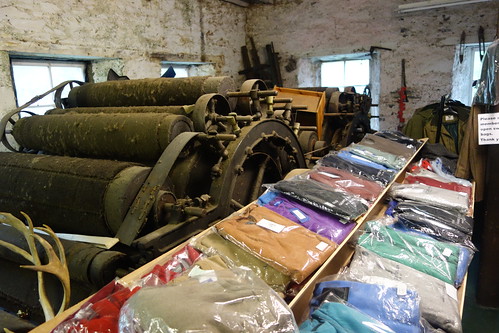
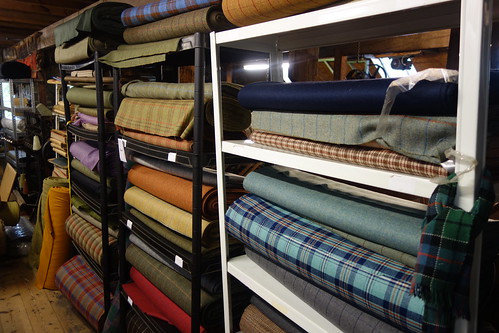

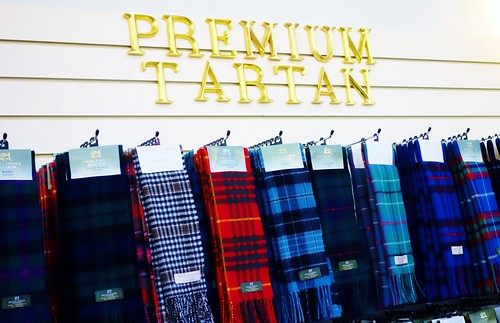

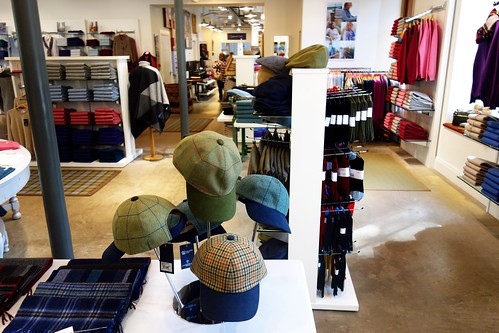
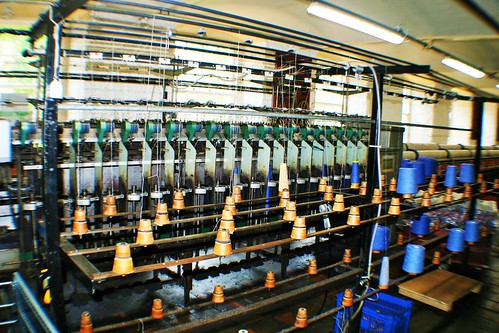

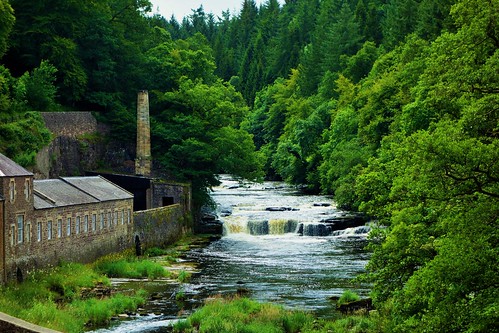
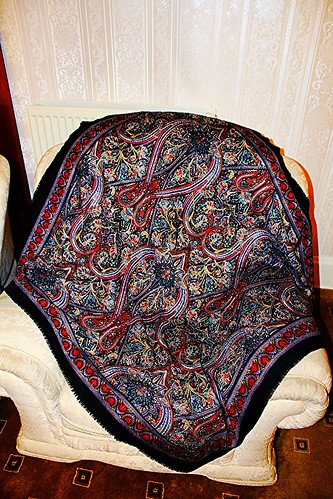
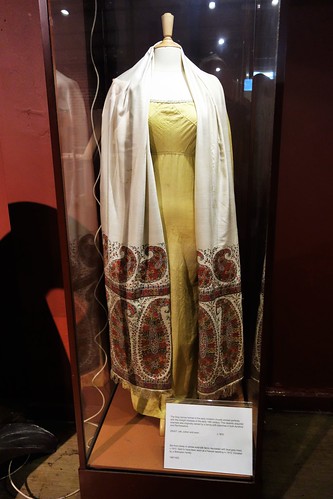
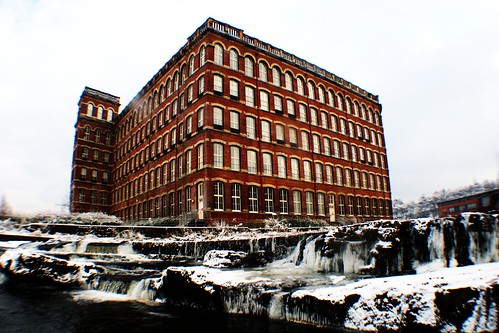
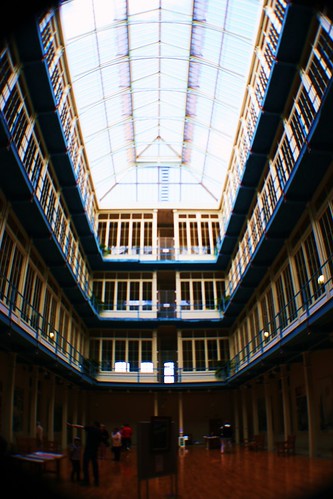
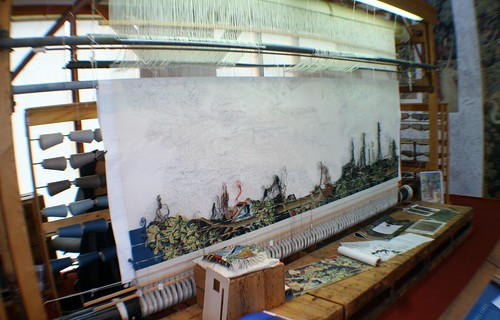


Comments
Post a Comment